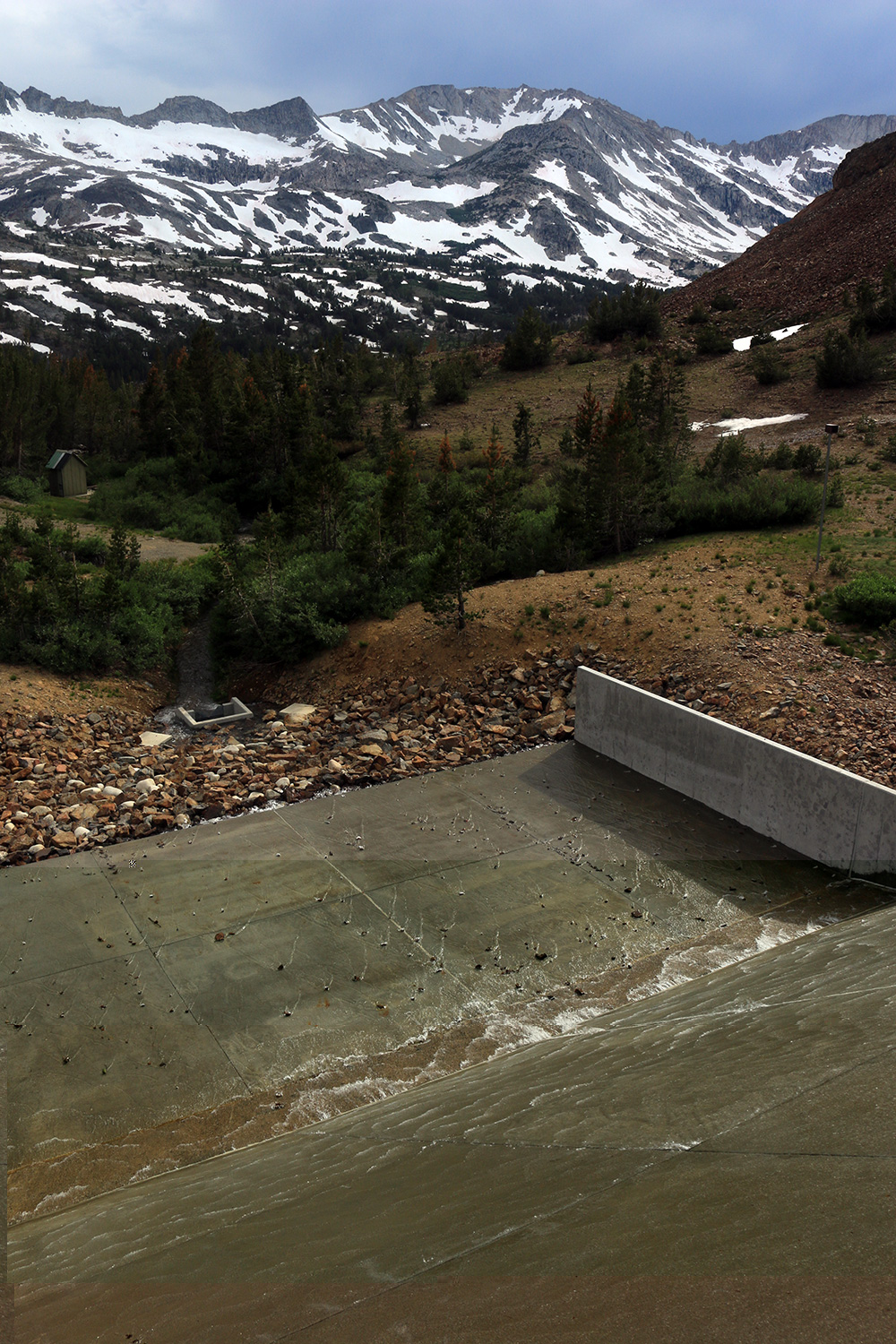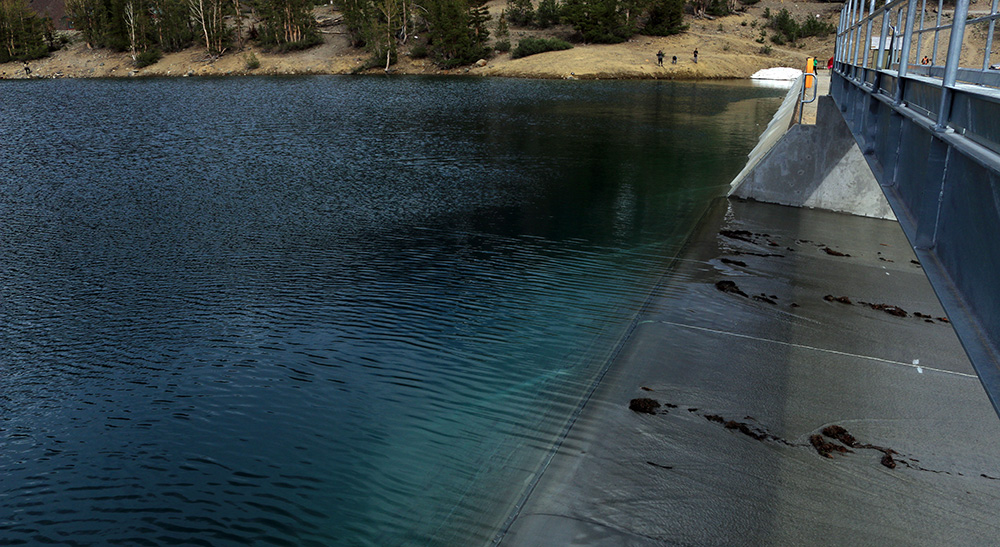

For the first time since at least as far back as 1983, Saddlebag Lake Reservoir on Lee Vining Creek is spilling. This is a rare event—and possibly a first—for the highest lake you can drive to in California.
Saddlebag Dam, at 10,090′ elevation, was built in 1921 to enlarge an existing alpine lake for hydropower generation purposes. The dam was raised and a spillway was added in 1925. The reservoir is oversized compared to the volume of water produced in its watershed, and given the agreement between Southern California Edison (SCE) and the Los Angeles Department of Water & Power (DWP), which requires it to be very low every spring. It is unclear if it has ever spilled before now. Last week it was inches away from its spillway, at the end of the day on Monday it was very full at 9,400 acre-feet of water, and on Tuesday it spilled!
The ASO flights in July revealed a tremendous—and rapidly melting—snowpack above the reservoir and provided a good indication that Saddlebag would spill by early August.
While Saddlebag, Tioga, and Ellery reservoirs are spilling, the flow in Lee Vining Creek is nearly unimpaired. Unimpaired flow is near-natural, which means the flow is unobstructed by dams or diversions—although it is not exactly natural because it is still influenced by current land use. Mimicking the natural flow regime is an important restoration objective for the Mono Basin streams, and the flow in lower Lee Vining Creek is currently unimpeded by dams or diversions. Rain falling anywhere in the Lee Vining Creek watershed will currently cause the creek flow to respond all the way down to Mono Lake!

